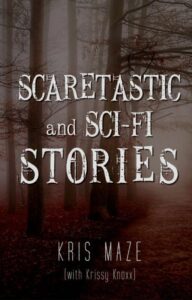by Eldred Bird

I thought I had a pretty good idea who my readers are, but I was surprised to learn I have some fans I never considered. I recently received an email about a segment of the population who were enjoying my books and asking for more. They are what you might call a captive audience. It seems my James McCarthy books have found their way into a local prison.
The emailer told how she had ordered my books for her son through an approved vendor, as required by the prison rules. After reading and enjoying them, he shared the books with others on his unit and they became fans as well. I was told they loved the relatable characters, familiar locations, and the way I described local law enforcement agencies. The books were something they could connect to, something that took them outside the walls for a while.
She also said they were asking when the next book would come out. I guess I need to get to work…
A Wake-up Call
When I first started writing, I didn’t think much about who my audience would be. Like many new authors, I pretty much wrote for myself. As time went on and the dream of actually publishing began to take shape, things changed. Suddenly, I was faced with figuring out who would buy my books and how I could reach them.
Whether you’re an independent author like me, or traditionally published, knowing your audience is crucial if you want to have any chance at success. Different audiences have different expectations. These may depend on location, genre, or age, just to name a few. There’s also format (print, eBook, audio, etc…) and distribution to consider.
Let’s take a look at some of these things that might help you find and reach your audience.
Genre
One of the most important things to consider when trying to determine who will be interested in your books is genre. You really need to know what you’re writing. There are a couple of reasons for this.
Knowing your genre is going to help you narrow down the landscape and help you to target your readers more accurately. One of the first things any distributor is going to ask for is the genre your book will be listed under. If your book qualifies for more than one genre (most do), pick the one that is more prominent through the manuscript. Many services will let you list a second category as well. My James McCarthy books are listed under both Mystery and Adventure, with Adventure as the primary genre.
Another reason to know your genre is reader expectations.
Fans of some genres have very clear expectations of what beats the story must hit. If you disappoint them, they won’t come back for more. Worse yet, they might leave negative reviews and cost you future sales.
One example is readers of cozy mysteries. While they love a good murder mystery, they don’t want to see the blood or violence. They’re more interested in how the amateur sleuth at the center of the story follows the clues and ultimately corners the killer. Throw in a curmudgeonly old police detective as their sideman and you’re golden.
Do your research and get to know what specific genre readers want. It will pay off in the end.
Age Groups
Like genres, the age group you’re targeting is a big consideration. General Fiction, which is what the bulk of us probably write, is typically targeted toward more mature audiences. Think high school age and up. If your target audience is below that age, things get a little more complicated.
The breakdown is generally as follows:
- Newborn to age 4: Picture books in the form of board and soft books
- Ages 2–5: Early picture books
- Ages 5–8: Picture books, coloring, activity and novelty books
- Ages 4–8: Early (easy) readers
- Ages 6-9: First chapter books and graphic novels
- Ages 8–12: Middle-grade novels and graphic novels
- Ages 12-18: Young adult (YA) novels and graphic novels
The ages on this list aren’t carved in stone, as some kids may read far above their age level. Don’t worry about them, they read everything!
Learn what is expected for the general age range you are targeting and write for them.
Media Format
Back in the day, book choices were pretty much limited to two options—hardcover or paperback. Sure, there were different cover size options, and font choices, but that was about it.
Times changed and so have readers. Not only do we have the classic format choices, but also eBooks and audio books. Add to that the different types of eBook file options and things start to get complicated. It’s all based on which eReader the files are to be read on.
The most popular formats for eBooks are MOBI (Amazon’s primary format), EPUB, and PDF, but there are a host of others as well. Your book can be formatted as HTML, RTF, iBook, and a handful of more obscure formats.
The format you choose is going to be highly dependent on what device your target audience primarily uses for reading, and who you choose for distribution. You may also want to make your books available in multiple formats.
Audio book production is a whole other can of worms that is probably best left for a future article. Suffice it to say that there are also many file formats to consider, but the most involved process is the recording and audio production.
There are choices to be made like who will read for the performance? Will you hire a voice actor or read it yourself? Will you use an established studio or record it yourself at home?
This is one area where I highly recommend professional help and advice.
Distribution
If you’re traditionally published, distribution of your books is something that will be taken care of for the most part. The publisher will already have their distribution chain in place. They will take care of things like obtaining ISBNs and getting your books into the wholesale catalogs so bookstores and libraries will have access to them.
For those who choose the independent path, you will need to handle these things yourself.
Many independent authors choose to go straight to Amazon for production and distribution of their work. It’s fast and easy, and the first place most readers think to go for new material. That’s all good, but Amazon has its limits.
If you choose to publish exclusively through Amazon, you’re going to miss the opportunity for wider distribution. Bookstores and libraries will not have access to your work, and that limits your ability to reach your audience.
Many dedicated readers still prefer walking into a bookstore and holding the actual book in their hands before buying. They may also like supporting their local independent shop by ordering through them. That can’t happen if you’re not listed in the wholesale catalogs.
If I hadn’t opted for the wider distribution, I never would have captured my new fanbase.
By creating my own publishing imprint (Burro Creek Press), I was able to obtain my own ISBNs and get more reach in the marketplace. Producing my books through IngramSpark puts my work in the Ingram catalog, one of the primary sources for bookstores and libraries.
Final Thoughts
No matter what you write or how you plan to publish, knowing your audience will make a big difference in your chances for success. Knowledge of your reader base will inform not only your writing process, but how and where you market your work. Do your research. Find out who your potential readers are, what they value in a story, and how they prefer to consume it.
Oh, and keep your eyes open and an ear to the ground. You never know when and where you may find your own captive audience…
Who are your readers and how do you reach them? Do you have a section of readers you did not expect? Please share them with us in the comments.
About Bob

Eldred Bird writes contemporary fiction, short stories, and personal essays. He has spent a great deal of time exploring the deserts, forests, and deep canyons inside his home state of Arizona. His James McCarthy adventures, Killing Karma, Catching Karma, and Cold Karma, reflect this love of the Grand Canyon State even as his character solves mysteries amidst danger. Eldred explores the boundaries of short fiction in his stories, The Waking Room, Treble in Paradise: A Tale of Sax and Violins, and The Smell of Fear.
When he’s not writing, Eldred spends time cycling, hiking, and juggling (yes, juggling…bowling balls and 21-inch knives).
His passion for photography allows him to record his travels. He can be found on Twitter or Facebook, or at his website.
Top photo from Depositphotos.








